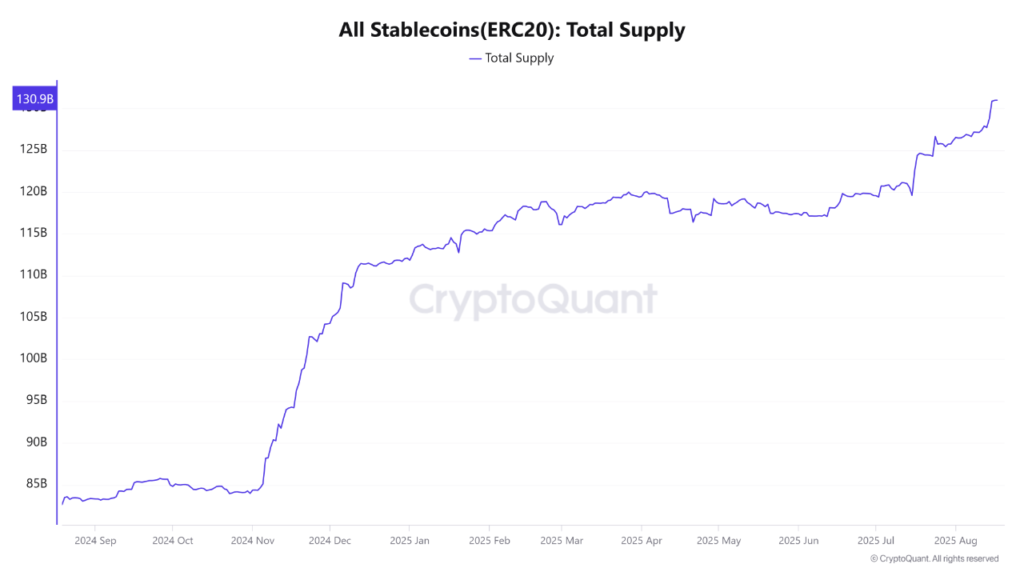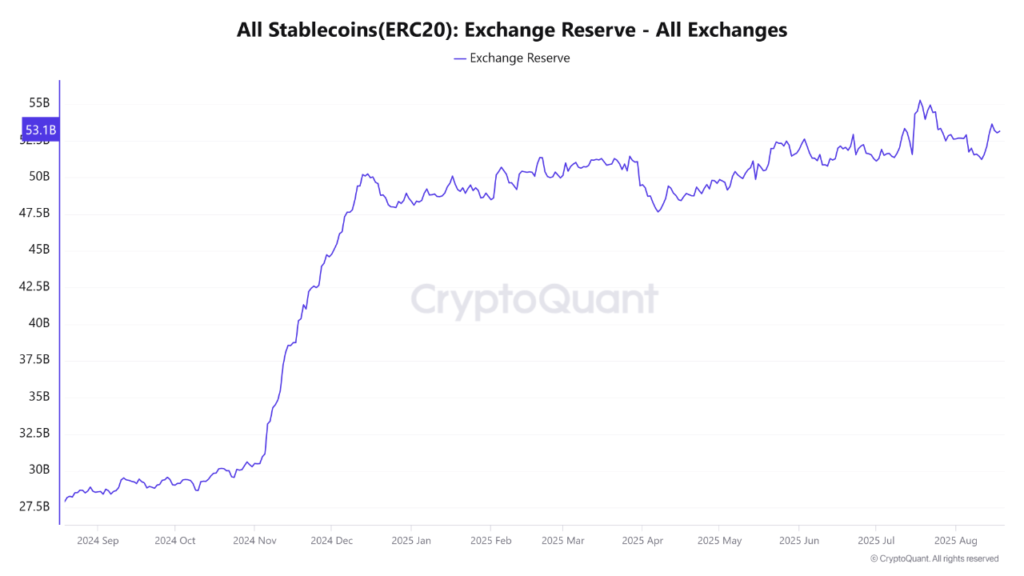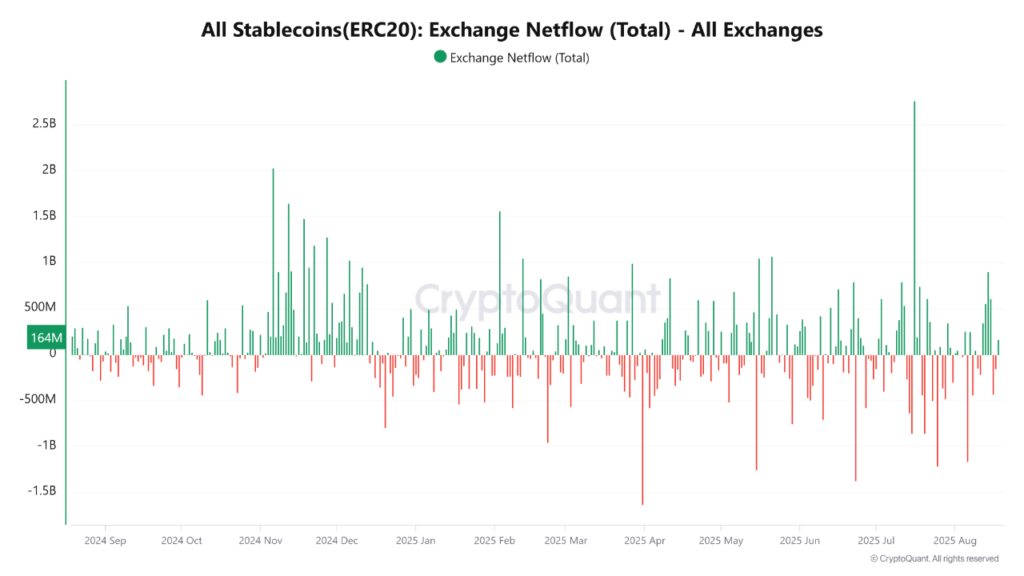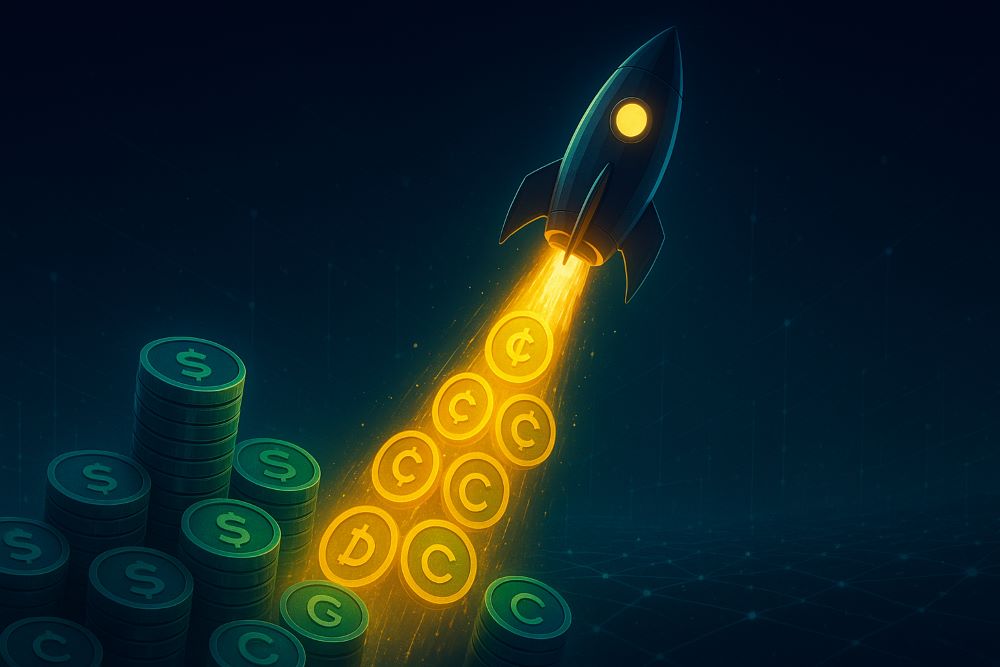The crypto market has once again come under scrutiny after the stablecoin supply hit an all-time high (ATH).
According to XWIN Research Japan on CryptoQuant, the figure has now surpassed $160 billion, a record that is not only a statistical record but also a sign of the readiness of large capital that could at any time fuel a new rally.

Furthermore, the position of stablecoins in the current crypto ecosystem can be likened to the money supply in an economy. The continuously increasing total supply signals growing investor confidence. With such a large amount, stablecoins function not only as a means of payment but also as a liquidity reserve and a primary channel for transaction settlement.
Stablecoins reserves signal market’s rally readiness
Meanwhile, data shows that approximately $32 billion in stablecoins are currently held on various exchanges. This amount is comparable to chips already on the gaming table, ready to be used at any time.

History also shows that reserves of this magnitude often emerge just before Bitcoin and Ethereum begin sharp upward trends. So it’s no wonder that many market players are now becoming more vigilant in reading this signal.

Furthermore, new capital flows continue to flow into exchanges. Daily records show over $1.2 billion flowing into trading platforms daily. This inflow acts as a kind of short-term trigger. Many believe that major moves are usually preceded by such signals, as they indicate whales or institutions are preparing for a major move.
However, what makes this situation feel different is the combination of these three indicators: a macro supply of $160 billion, exchange reserves of $32 billion, and inflows of $1.2 billion per day. Combined, this is like fuel for a rally engine that’s been waiting to be ignited.
Furthermore, this situation also reminds many market participants of the 2021 phase, when similar signals appeared before major crypto price spikes. Now, with stablecoins playing an increasingly vital role, they are no longer just simple transaction tools, but key drivers that can determine the direction of market cycles.

